In the list of the most common diseases in the 21st century, spinal diseases always occupy a leading position. In most cases, the first line is the diagnosis: cervical osteochondrosis-a dangerous disease that requires mandatory intervention by experienced doctors.
This disease cannot save anyone, neither women nor men. (Men suffering from cervical osteochondrosis is less common than women, but it does happen). In addition, this disease is "becoming younger" every year. Today, signs of cervical osteochondrosis can be observed not only in people over 40, but also in people who celebrated their 25th birthday yesterday.
What is cervical osteochondrosis, what is the catalyst for the onset of this disease, why the epidemic called cervical osteochondrosis is becoming more and more popular, the symptoms of cervical osteochondrosis should be the reason for going to medical institutions, howAvoiding illness and eating have a chance to get rid of cervical osteochondrosis forever? For those seeking answers to these questions, this article aims to. So, first thing first.
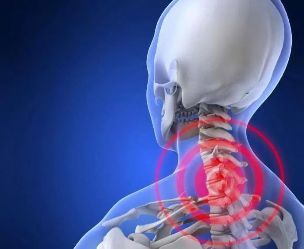
General information about diseases
This disease can be described in one word-malnutrition. It appears under the background of changes in the chemical composition of bone and cartilage tissue, and it loses elasticity and strength due to the elements of the spine (intervertebral disc). Their structure changes, first destroying the outer layer (annulus fibrous) and then the inner layer (nucleus pulposus). Intervertebral discs (fibrocartilage) that have completely lost their properties may deform, overgrow (osteophytes) and shift.
Disk, change its shape, size and position, squeeze nerve roots (they may damage one of the 8 pairs of spinal nerves in the area) or blood channels (the arteries responsible for supplying the brain through the area). . . In the first case and in the second case, the symptoms of cervical osteochondrosis are obvious to me.
Cervical chondropathy is the most common diagnosis that a neurologist or vertebral surgeon must express to the patient. Cervical osteochondrosis is the most common reason for visits. There are two reasons:
- Anatomical features. The fragility of the upper spine is related to the smallness and fragility of its connecting elements (vertebrae, intervertebral discs).
- Serious load. The neck is responsible for both mobility and stability. This has to anger the weak links.
This is why the question is asked: Is cervical osteochondrosis treated?
Causes of diseases
Before continuing to explore this point: how to treat osteochondrosis, you should understand the cause of its occurrence and try to rule out the factors that may trigger its development.
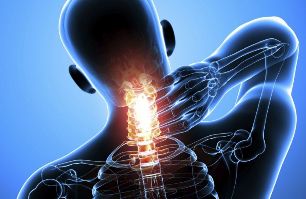
It is impossible to provide a complete list of catalysts, but it is possible to outline the moments that may lead to the fact that the symptoms of cervical osteochondrosis will not keep you waiting.
The main cause of osteochondrosis:
- Unhealthy diet (running fast food, fast food, lack of diet and a completely balanced diet-this is the direct way to consume cartilage and bone tissue, and cartilage and bone tissue are not supported by enough trace elements and vitaminsIts health); A sedentary lifestyle (another possible option is lack of physical activity, which causes stagnation of the spine elements and inability to provide enough oxygen to the tissue);
- Genetic susceptibility (in this case, you can ask your parents how to treat cervical osteochondrosis, and they will tell you how to get rid of cervical osteochondrosis and how the disease manifests);
- Past injury (when the development of this disease is caused by the displacement or rupture of the intervertebral disc due to injury, it may also be necessary to obtain information about cervical osteochondrosis);
- Infectious or inflammatory diseases of the vascular system (in the first case, information on the following topics: The problem of how to treat cervical osteochondrosis due to lack of nutrition to support cartilage tissue; secondly, This is due to autoimmunity and the process of necrosis that destroys joints, vertebrae and bones).
Hormonal background instability and improper posture (scoliosis) caused by overweight or stressful conditions are two other reasons that make you familiar with the material in this case: whether it can cure cervical osteochondrosis.
Signs of disease
established the cause of cervical osteochondrosis. The wrong job has been done. Now, the most important thing is not to miss the symptoms of osteochondrosis in the neck (if the risk factors are eliminated too late and the disease has begun to manifest). The sooner they are diagnosed, the easier and faster the road to recovery.
For convenience, it is convenient to divide all the signs of the disease into two groups. It can be done based on the following main criteria: Origin.
The first group is a phenomenon, which appears due to the clamping of blood vessels (caused by blood vessel changes). The compressed blood delivery channel full of oxygen and nutrients cannot fully meet its tasks, and some of the nutrients in the brain are reduced and some functions are lost.
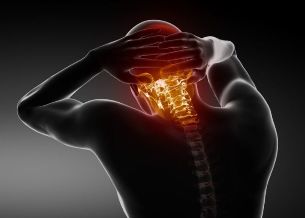
The second group includes symptoms, which are related to compression of nerve endings (caused by changes in the nervous system). In most cases, the vagus nerve (coordinating the state of the esophagus, pharynx, and larynx), the nerve (responsible for the regulation of heart rate and respiratory processes), and the nerve endings that innervate other organs in the internal structure will suffer from deformation, destruction and mixing of the intervertebral disc and vertebrae.
The following table lists detailed information on how to not miss the first "bell" of the disease in the case of cervical osteochondrosis and prompt use of the help provided by the attending physician.
Symptoms of this disease
| Origin | Performance |
|---|---|
| Changes in the state of the vascular system | Dizziness, fainting Lack of coordination Memory impairment Loss of concentration Loss of vision and hearing Black spots in front of eyes Tinnitus Indifference, depression Panic attack Nausea, vomiting |
| Nervous system changes | Neck, temples, occipital (continuous, paroxysmal) pain Pain spreads to arms, shoulders, shoulders, chest Shortness of breath, shortness of breath, choking Stress, chest tightness, angina pectoris Lump in throat, difficulty swallowing, dry throat, itching |
Important! If you have at least one of the symptoms in the table above, you must urgently undergo an examination and begin treatment of cervical osteochondrosis. Any other behavior may lead to more serious consequences, and there is no cure without surgical intervention!
Comprehensive Therapy
How to treat cervical osteochondrosis, this is the sore voice. The answer is clear: with the help of complex treatments prescribed by qualified doctors.
To combat this disease, we must strictly observe discipline from patients and strictly follow expert advice. In most cases, cervical osteochondrosis can be cured immediately through a variety of traditional and alternative medicine methods (only the doctor coordinating the patient can determine a specific plan for effective treatment of cervical osteochondrosis).
Usually, he chooses the technology from the following list:
Exercise therapy
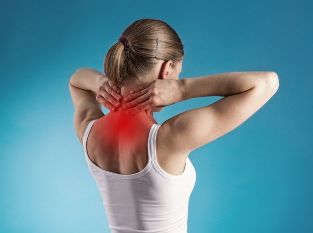
Physical therapy is an excellent health therapy tool that allows you to cure osteochondrosis of the cervical spine and improve your overall health. It can solve several problems immediately:
- to normalize blood circulation;
- Speeds up the metabolic process;
- Relieve pain syndrome;
- Muscle-strengthening corset;
- Uninstall the spine;
- is full of joy and optimism.
There are many rules that explain how to get rid of cervical osteochondrosis by charging correctly without making the situation worse. They read:
- A group of exercises should be selected by experts who have knowledge of the overall clinical situation (age, chronic diseases and patient characteristics);
- Sudden movements that are too active are completely excluded. You need to be cautious and do not rush;
- Exercises should be done regularly (exercising from time to time will not solve the problem).
Massage (manual therapy)
Is there any other way to cure cervical osteochondrosis? quite. To activate the body's regenerative properties, relieve spasms, release nerve roots, block arteries and relieve symptoms, all these are the skilled hands of a good masseur or manual.
The general guidelines are:
- This procedure must be performed by an expert with appropriate education and experience;
- Exposure time to the problem area-no more than 35 minutes;
- Duration of a course (without interruption)-no more than 12 sessions;
- The attending physician must be aware of any changes in the patient's condition.
Important! Get an osteochondrosis massage or go to the therapist's office-the contraindication manual is strictly prohibited!
Physical Therapy
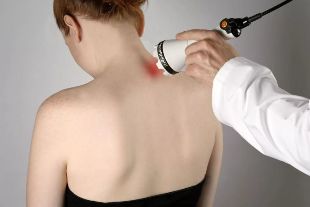
This field of clinical medicine has found its own answers to the following questions: How to get rid of osteochondrosis? She suggests using the healing properties of various phenomena, including:
- High frequency sound waves (ultrasound);
- Mechanical vibration (vibration);
- Various intensities of current (electrophoresis, UHF);
- Ultraviolet (quartz);
- Other physiotherapy techniques.
These processes help generate positive momentum. They normalize blood flow, reduce inflammation, relieve pain, facilitate the administration process and shorten the time it takes for tissues to absorb them.
Drugs
Despite all attempts to prevent the continued development of this process, how to deal with cervical osteochondrosis? Only with the aid of drug design can the cause of this phenomenon be eliminated.
According to the measures taken, all drugs used in a comprehensive manner are divided into several categories. The following table will help clarify the situation.
Medicines
| Group | Operation | |
|---|---|---|
| Analgesics, non-steroidal anti-inflammatory drugs | relieve pain, eliminate inflammation process |
|
| Muscle relaxants |
Muscle spasm relief | |
| Cartilage Protector | Activate tissue regeneration, restore the structure of intervertebral discs, vertebrae, and joints |
|
| Vitamins and minerals |
Stimulate the metabolic process, activate the body's protective properties, improve the microcirculation, strengthen the immune system |
Experts will decide for themselves how to treat cervical osteochondrosis. According to the overall clinical situation of the disease, it can be supplemented with vasodilators (releasing vasodilators), antidepressants (releasing nervous tension) and other drugs.
In summary, we can give a clear answer to the main question: Is osteochondrosis treated? Yes, but only under the strict supervision of a capable doctor and the patient's own strong desire!






































